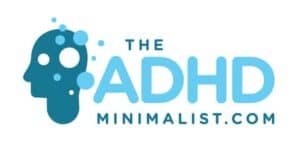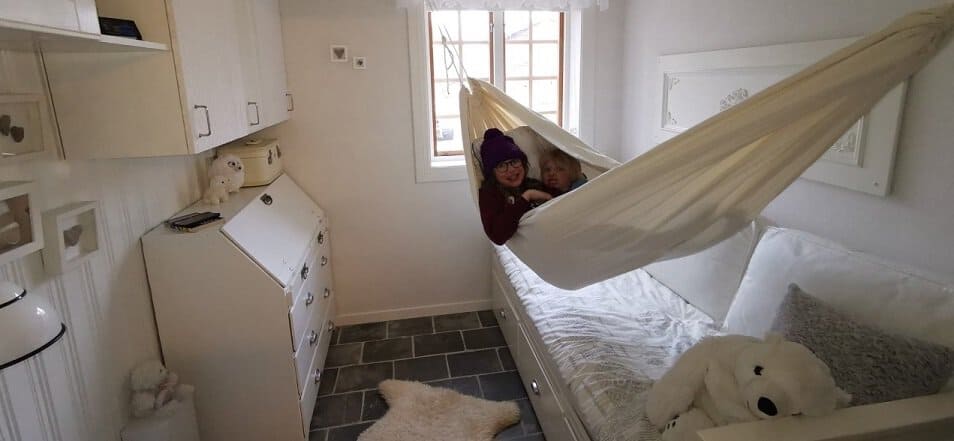
Is your teenager constantly battling the chaos of a cluttered room due to their ADHD? Imagine a world where their living space is transformed into a haven of organization and calm. In this article, we reveal the secret room organization hacks that can revolutionize your teen’s space, providing them with the tools they need to thrive.
From decluttering strategies to storage solutions, creating an organized study space, and establishing daily routines for success, these practical tips will empower your teen to take control of their environment and unlock their full potential. Join us on this journey to uncover the key to a more organized and focused living space for teenagers with ADHD.
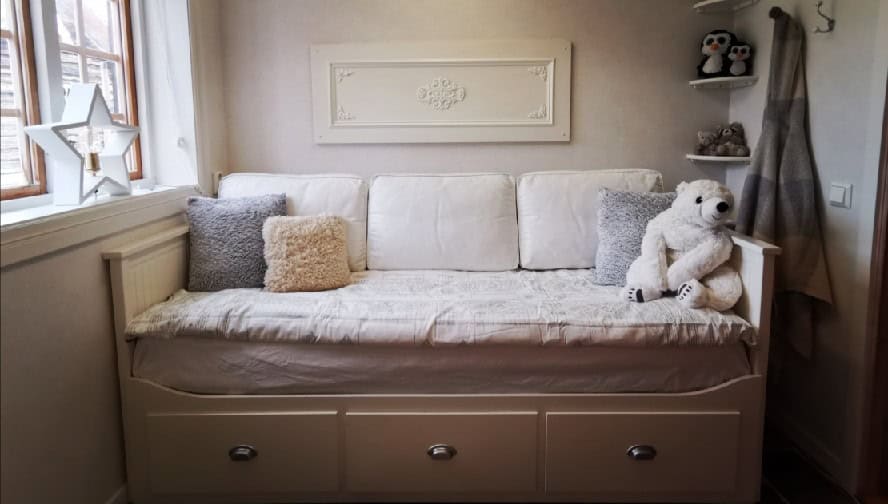
Decluttering Strategies for Success
Now, let’s explore some decluttering strategies to set the stage for effective storage solutions. Let’s keep your teen’s room organized and functional.
There are many ways to declutter a room. None of them are wrong. The point is to find a solution that works for you and the most important thing is (if you want your teen to keep a clean room) they MUST declutter!
Western countries have an overabundance of stuff, and quite frankly kids can’t manage all the gifts parents, grandparents, aunts, uncles, and friends lavish on them. If you add to that the fact that many teens go shopping for fun things quickly get out of hand.
The key to a clean room is that you shouldn’t have more stuff than you’re willing to manage.
Annie
You can easily see if you are willing to manage your things if you keep everything neat and clean. If your stuff is all over the floor it is easy to see that you have more clothes/items than you are willing to manage. In other words, you are not willing to give your time in order to pick up, put away, wash, fold, dust, fix, and clean your things.
The irony is that by not picking up and keeping order in your room you waste time looking for things, you waste emotions (because you are going to get frustrated that you can’t find things), and you waste energy (either you get worn out because getting upset makes you feel spent or you run around looking for and moving things which wastes energy). It’s best to declutter until you find that point where you have a perfect amount of stuff for you to maintain.
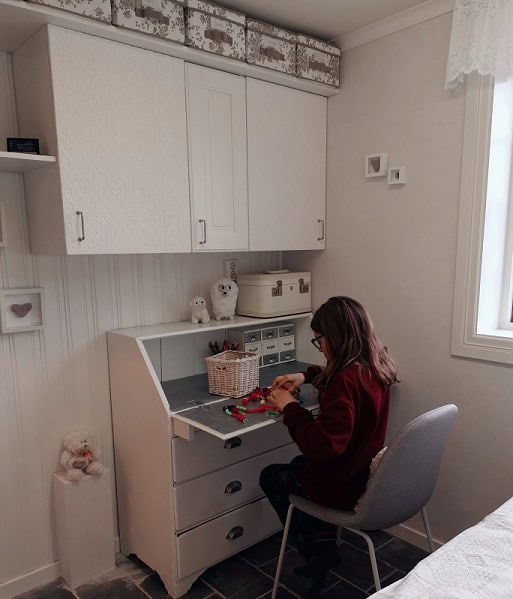
Storage Solutions Made Simple
It’s time to take a look at storage solutions that can simplify organization in your teen’s room and pave the way for creating an organized study space.
Above, is a picture of one idea for storing items in small rooms. A shelf runs the entire length of one wall with storage boxes on top and kitchen cabinets under it. The boxes are labeled so it is easy for teens to see what is inside. This room also has drawers for clothes under the bed and drawers for electronics, games, and toys under the desktop.
When you have a built-in closet plan to use it fully; your rooms need a storage system tailored to them. Bigger closets mean you can have less furniture for storage in the bedroom, and small rooms need creative solutions to find storage for necessary items.
My rules of thumb are:
- Keep everything out of sight. In other words, no see-through plastic boxes, storage on open shelves (unless it’s in aesthetically pleasing boxes with labels), open toy boxes, etc.
- Label Everything! Label the inside of the drawers etc. so kids know where everything goes. Use pictures if that’s better than spelling it out.
- Color-code. It may be a good idea to color-code certain items. Our family had a period where each family member had a color. We each had towels in our color, a toothbrush, and even a cup for everyday use in the appropriate color. You can make categories like clothes for physical education class and sports are orange. You may paint the inside of the drawer orange or cover it in orange paper, and on the handle, you place an orange sticker. Maybe clothes for school are blue, and Sunday clothes are green.
- Use a storage container as a boundary. If all your sports clothes should fit in a particular drawer then that drawer is a boundary. When the drawer is full kids must discard or donate something before adding more clothing to the drawer.
- Make it easy to get things out and put them back. Things your kids use every day must be easily accessible and easy to put back. If it’s hard to get to they may get it out, but they won’t put it away.
Label
Labeling is key. It gives your teen’s brain a break because they aren’t required to remember where everything goes when you’ve recently reorganized an entire room. It also eliminates most organizational cheating. When things aren’t labeled it’s easy to throw something in a space just because it’s empty. Humans fill voids and we are often not concerned about putting things in the correct space if there is a bunch of drawers/cupboards to fill.
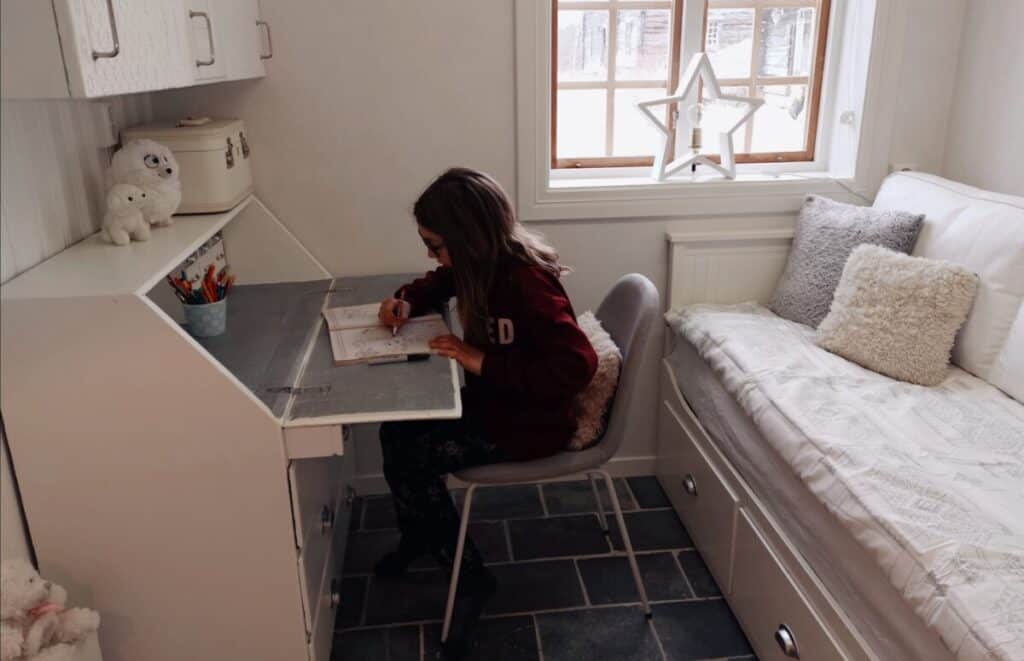
Creating an Organized Study Space
When creating an organized study space for your teen with ADHD, it’s important to consider both functionality and aesthetics. A clutter-free environment can help reduce distractions and promote focus during study sessions. Start by selecting a designated area in your teen’s room that is well-lit, with minimal visual distractions. Ensure enough space for a desk, chair, and storage for school supplies.
Consider investing in a secretary desk with ample storage, such as drawers, to keep essentials like pens, pencils, notebooks, and textbooks within reach. Utilize organizers in the desk, such as baskets, or trays, to categorize and separate different types of supplies. Labeling these organizers can help your teen quickly locate what they need and maintain order in their study space.
Secretary desks can do wonders for kids because they can close the leaf when it’s time to go to bed and they don’t have to see all the unfinished work on their desk. I have an entire chapter in my book Help! My Room Exploded about desks in kids’ rooms if you need more inspiration.
Incorporate ergonomic furniture, such as a supportive chair and adjustable desk, to promote good posture and reduce physical discomfort during long study sessions. Personalize the space (without making it overstimulating). Possibly motivational posters, inspiring quotes, or pictures will resonate with your teen, and create a positive and uplifting study environment.
By creating an organized study space tailored to your teen’s needs, you can provide them with a conducive environment for academic success. Next, let’s explore some tips for maintaining a clean room to ensure the study space remains organized and clutter-free.
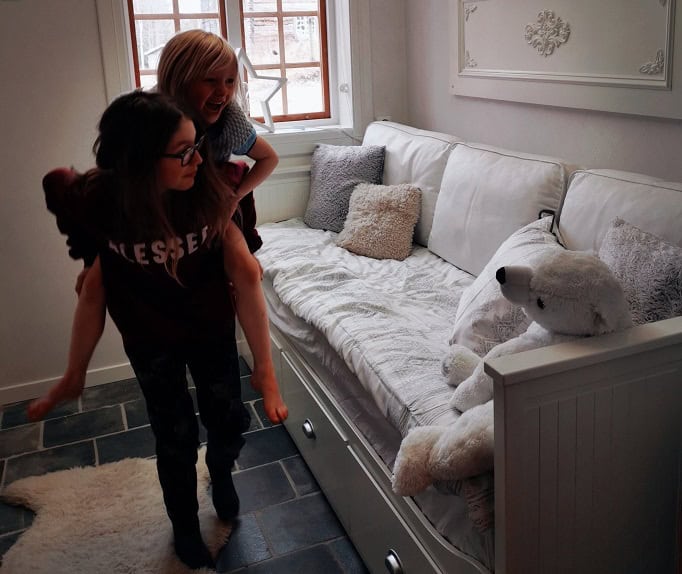
Tips for Maintaining a Clean Room
Now that you’ve set up a functional and organized space for your teen, it’s important to establish habits to maintain a clean room.
Encourage your teen to put things back in their designated places after use and implement a routine for tidying up the space regularly. I find it’s best to pick up a little before bed every day and designate a specific day each week for a thorough cleaning session. Involving your teen in the process should instill a sense of responsibility for their environment.
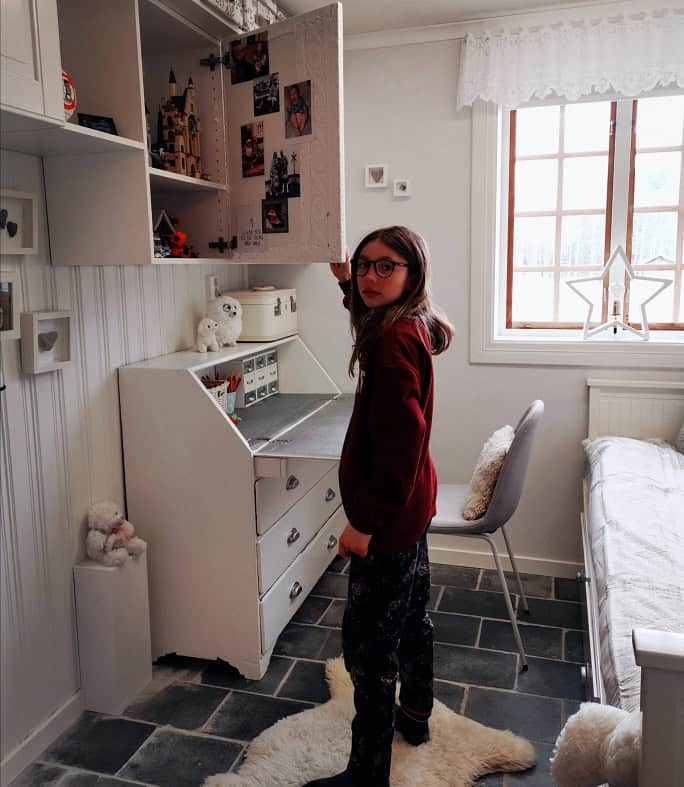
Personalizing the Space for Focus
Consider adding elements such as inspirational quotes, artwork, or decorations that resonate with your teen’s goals and aspirations. A vision board can also be a great addition to the study space or room, serving as a visual reminder of what they are working towards. Personalizing the space not only adds a touch of individuality but also creates a motivating and inspiring atmosphere.
Establishing daily routines for success builds upon the foundation of an organized and personalized space. When your teen keeps order in their room it allows them to maximize their productivity and maintain a consistent study schedule which will save them time in the long run.
Just remember that visual clutter can distract kids with ADHD so keep decoration to a minimum.

Establishing Daily Routines for Success
Establishing daily routines for success builds upon the foundation of an organized space, Consistency is key in creating good habits, so in the beginning you may need to ensure that teens follow their new routines diligently. It’s not hard to take fifteen minutes to pick up every day before you brush your teeth, and having a set day to clean their room is a way to make sure it gets done every week.
Decluttering won’t prevent the room from getting messy, but it will ensure that the room doesn’t get completely out of control. It’s the small daily habits that consistently create a clean space.
Conclusion
In conclusion, by utilizing the decluttering strategies, storage solutions, and study space organization hacks outlined in this article, teenagers with ADHD can transform their living space. Establishing daily routines and personalizing their environment can provide a sense of control and peace that is essential for success. Remember, taking action today to implement these room organization tips can make a world of difference in your teen’s life. As the saying goes, “A tidy room equals a tidy mind.” So, why wait? Help your teen thrive in an organized space starting now.
